Japan Trip: Day 4
November 12, 2013
It was another cloudy morning but thanks to a delicious dinner, lots of snacks, a long hot bath, and a really good sleep (didn’t have to wake up early), we were very well recovered from the busy Day 3. Seriously, I slept like the dead. This was our last day in Kyoto meaning we had to take everything with us and check out of the hotel.
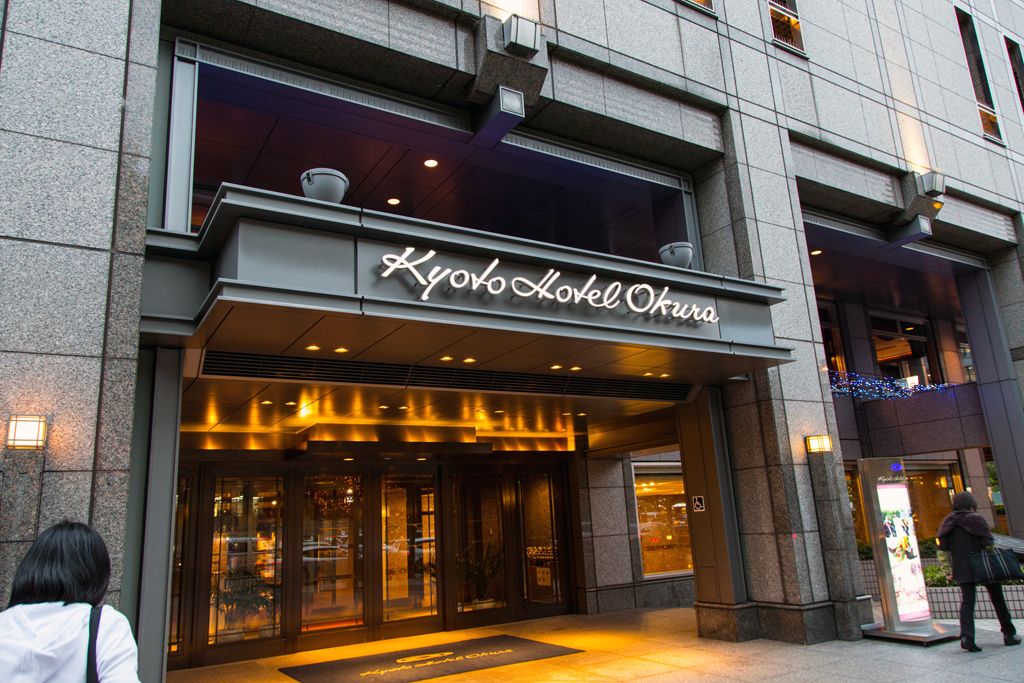
*Bye-bye Kyoto hotel!
By now we’ve pretty much gotten used to walking around with a crummy weather. Our first stop was Nijo-jo, my very first castle in Japan. It was kind of weird how the castle was in the middle of the city. One minute you’re in modern civilization, the next you’re back in 1600.
There are two parts of the castle: Ninomaru palace and the Honmaru palace. The Ninomaru palace, located at the front entrance, is much bigger than the Honmaru palace. It’s also more decorated and has a pretty pond on its garden.
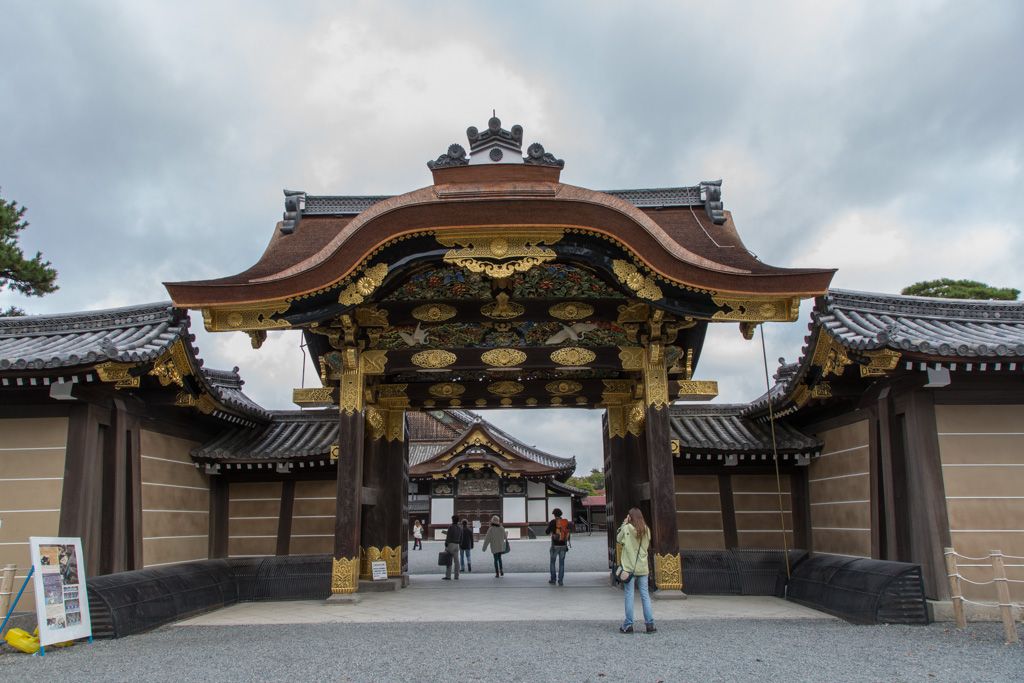
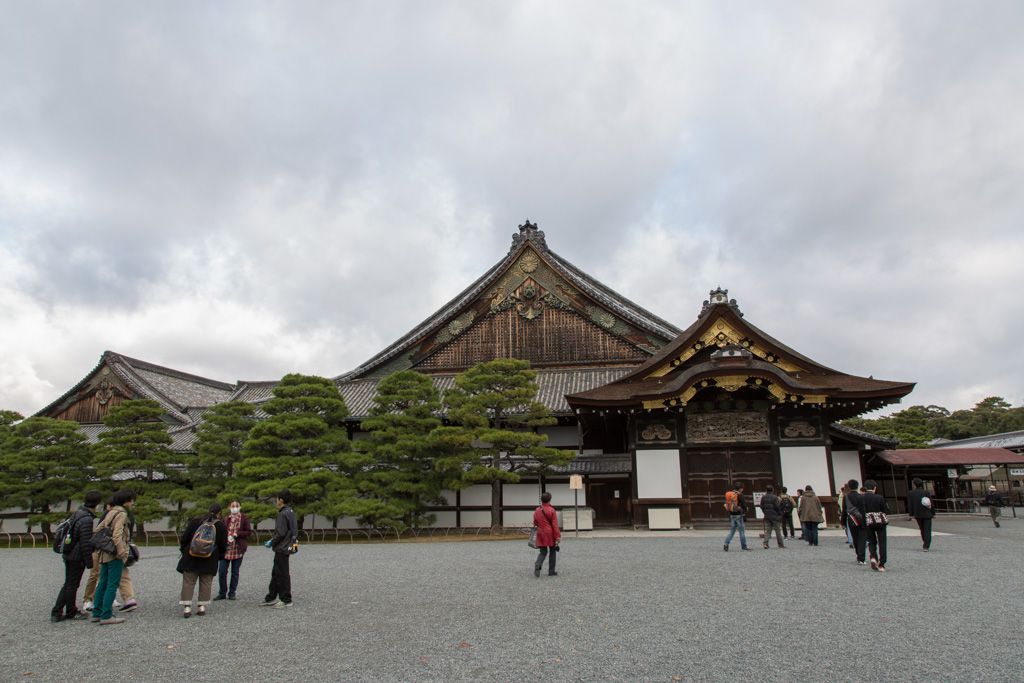
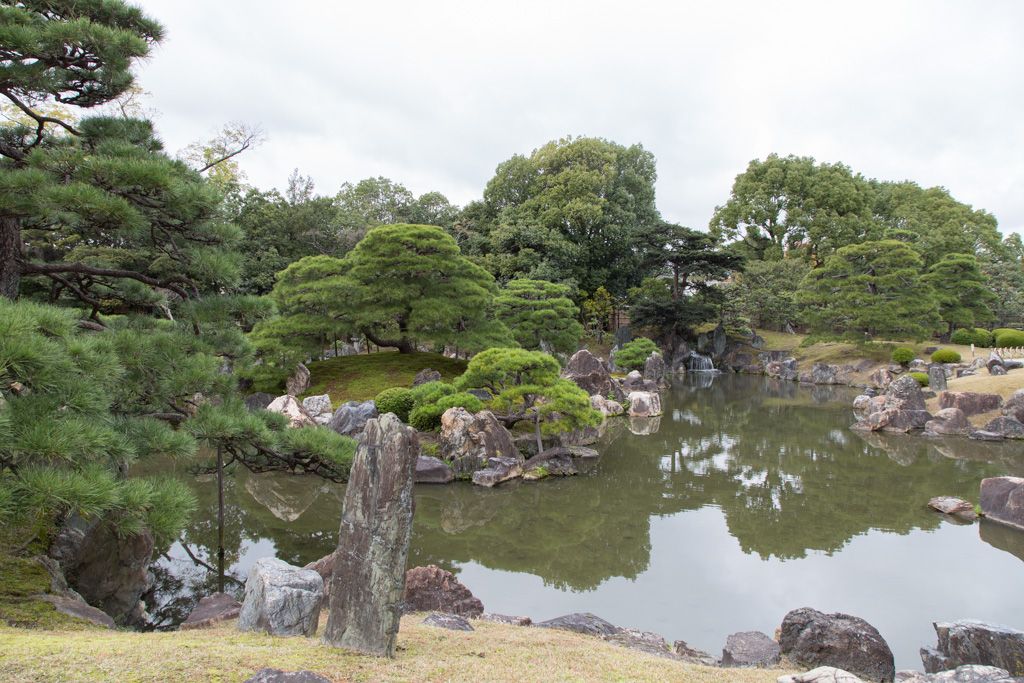
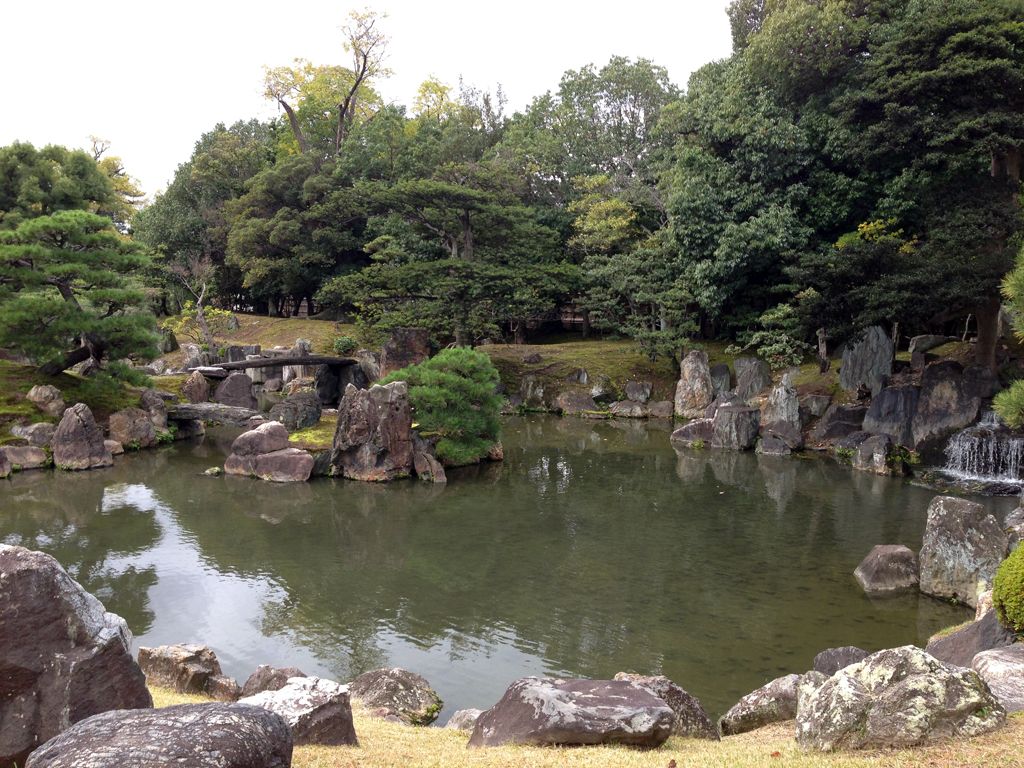
Even though we didn’t have a tour guide, I did learn a lot from the structure. The wooden floors close to the most important areas creaks to let the person inside know someone is approaching. It’s not a loud and annoying noise but a rather faint sound. I thought that was pretty clever how they built it.
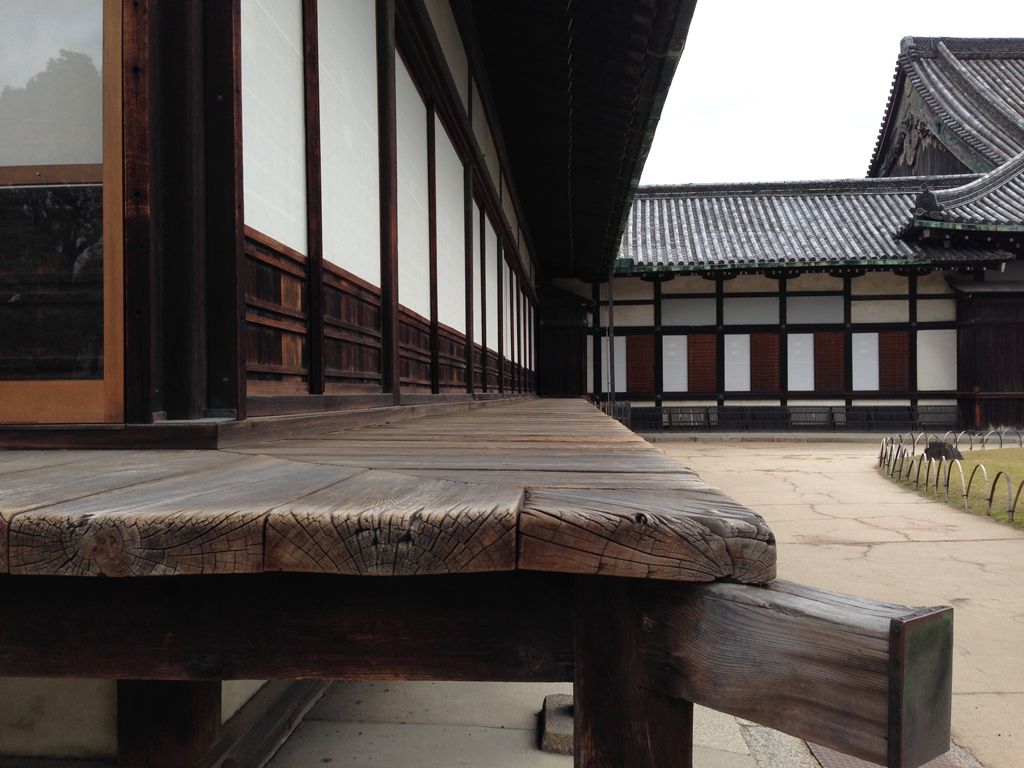
The Honmaru palace, on the otherhand, is smaller and surrounded by a moat. It’s mostly open space and didn’t have much of a garden but between the two palaces, this would have to be the safest. Ninomaru palace seems to be built more for entertaining guests while this one seems to be more of a private pad.
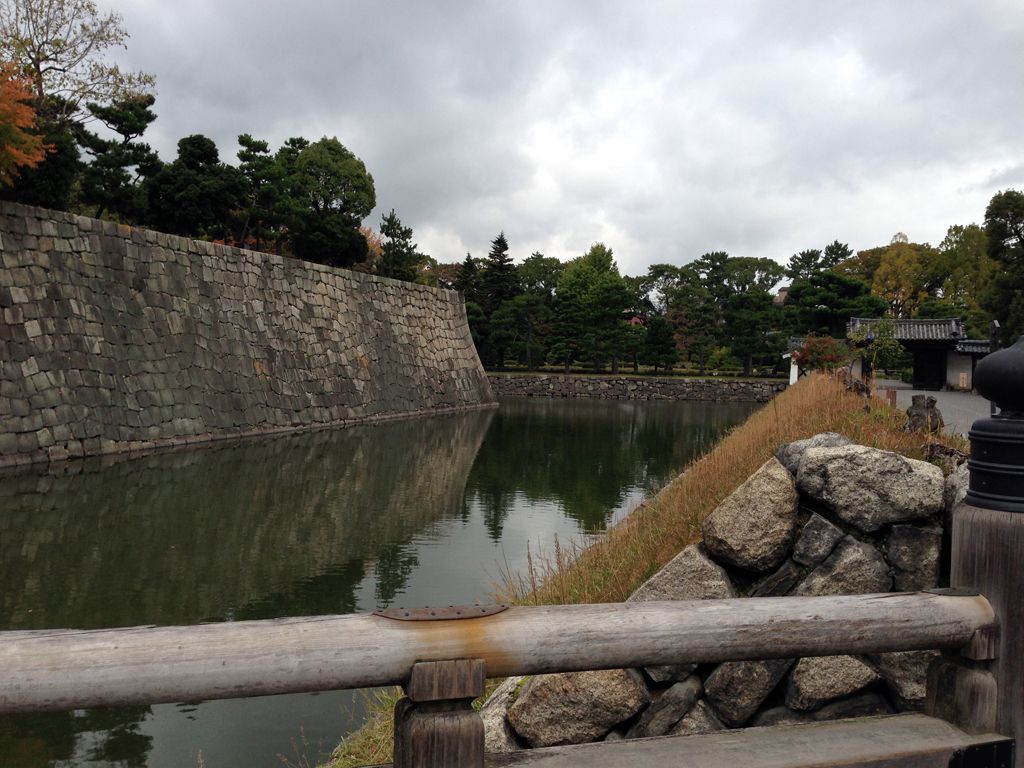
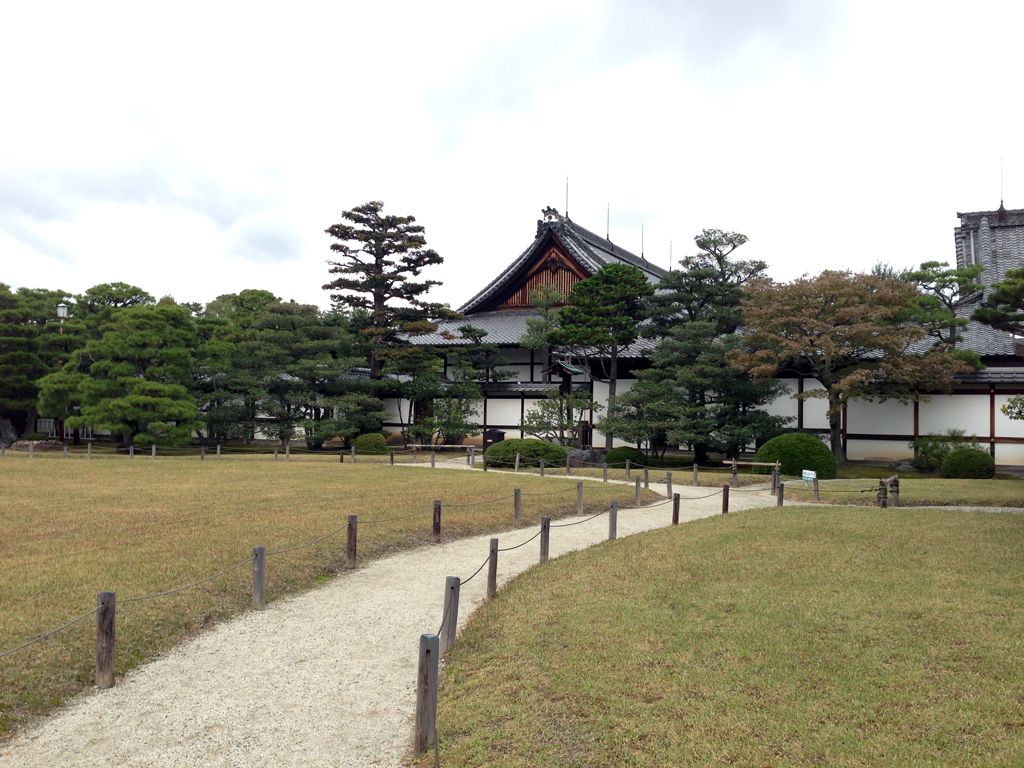
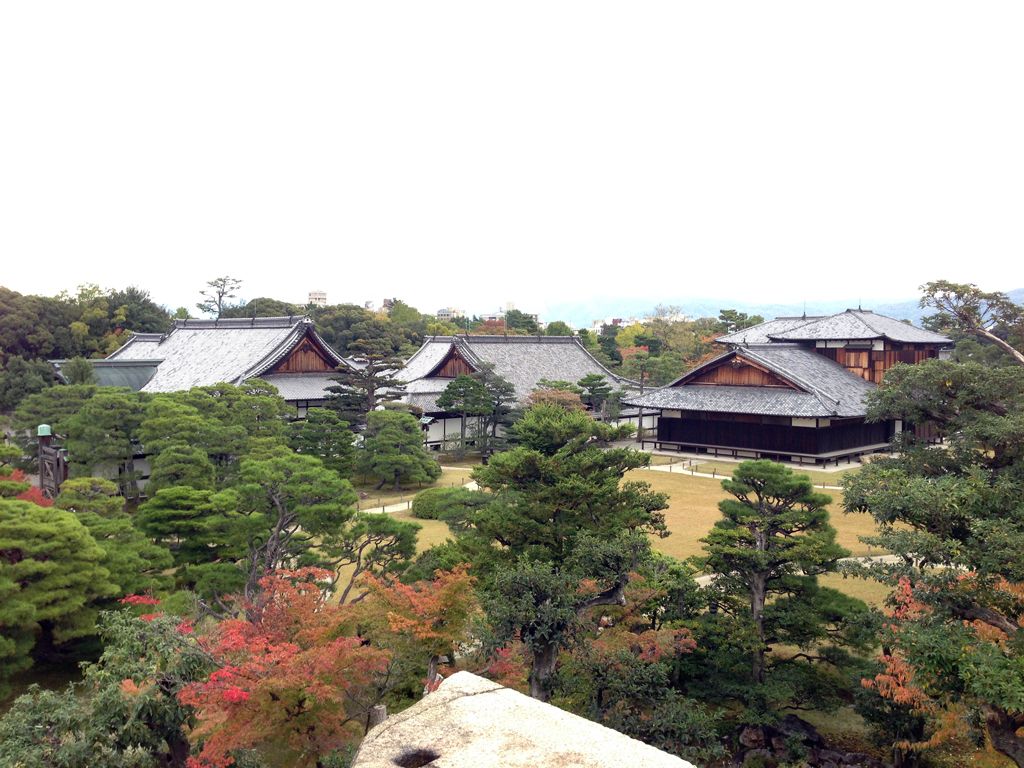
One of the interesting things I found in this castle was the Phoenix Trees (Chinese Parasol Trees) that were exposed to the atomic bomb.
Below is a direct English copy from the sign on the picture:
“This tree is offspring of one of the Aogiri trees in Hiroshima Peace Memorial Park which were exposed to the atomic bomb in Hiroshima in 1945. These Aogiri trees survived in spite of being 1.3 kilometers away from the center of the explosion and sustaining the full force of the heat rays and blast of the atomic bomb. Offspring of these trees have been planted in many places and represent the importance of peace and life for the next generation. In October, 2013 (Year 25 of the Heisei Era), students in Kyoto Municipal Horikawa Senior High School and Fukushima Prefectural Aizu Senior High School cooperated to plant this tree in accordance with the project of Yuyusha-Kyo-Suzume and the Kansai branch of the Foster Phoenix Aogiri Foster Movement.”
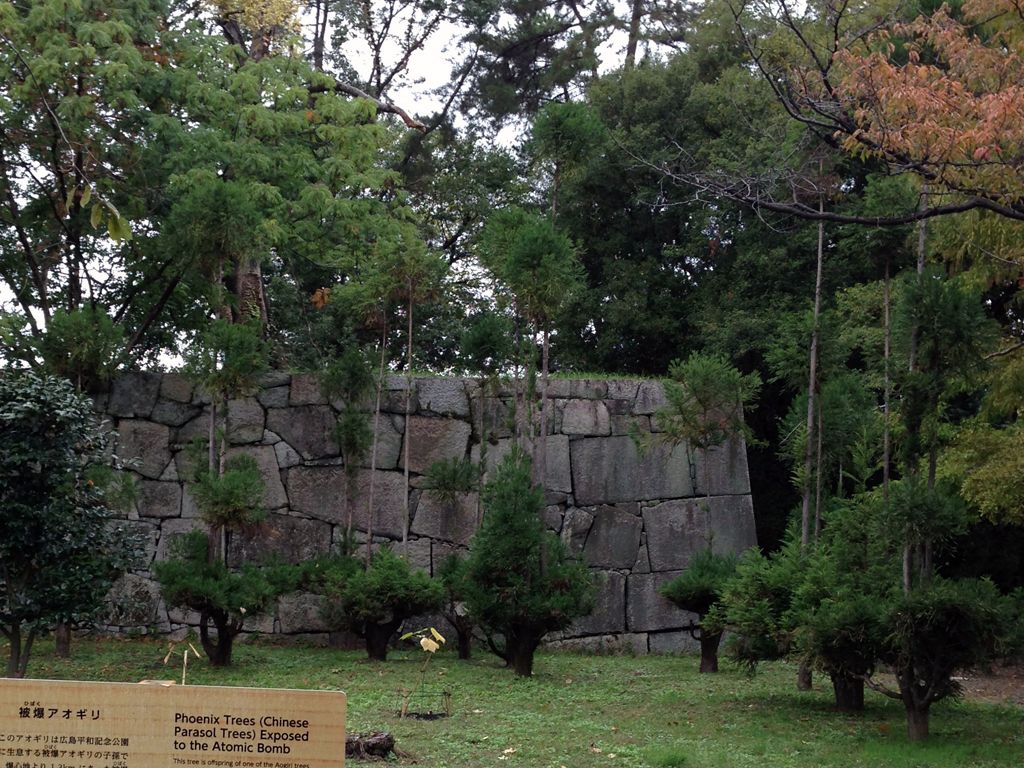
Our next destination was another temple called Kinkaki-ji. Oh my god… this was the most beautiful garden I’ve ever seen. The garden structure is an example of Muromachi period garden design, considered to be a classical age of Japanese garden design. The top two floors of the pavilion are covered in pure gold leafs and serves as “shariden,” housing relics of the Buddha. It was so beautiful that it literally took my breath away.

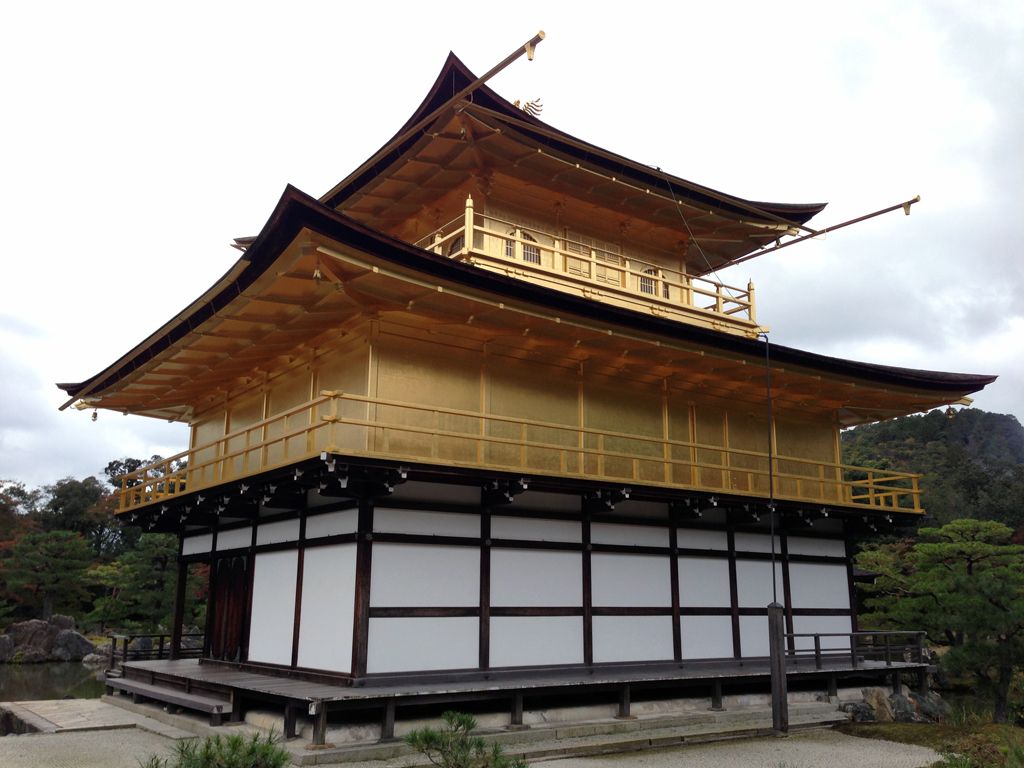
At the exit, Hiroshi went on a restroom break and I couldn’t help but buy myself a warm treat on a vendor close by. By the time he came out, a nice warm pork bun was waiting for him.
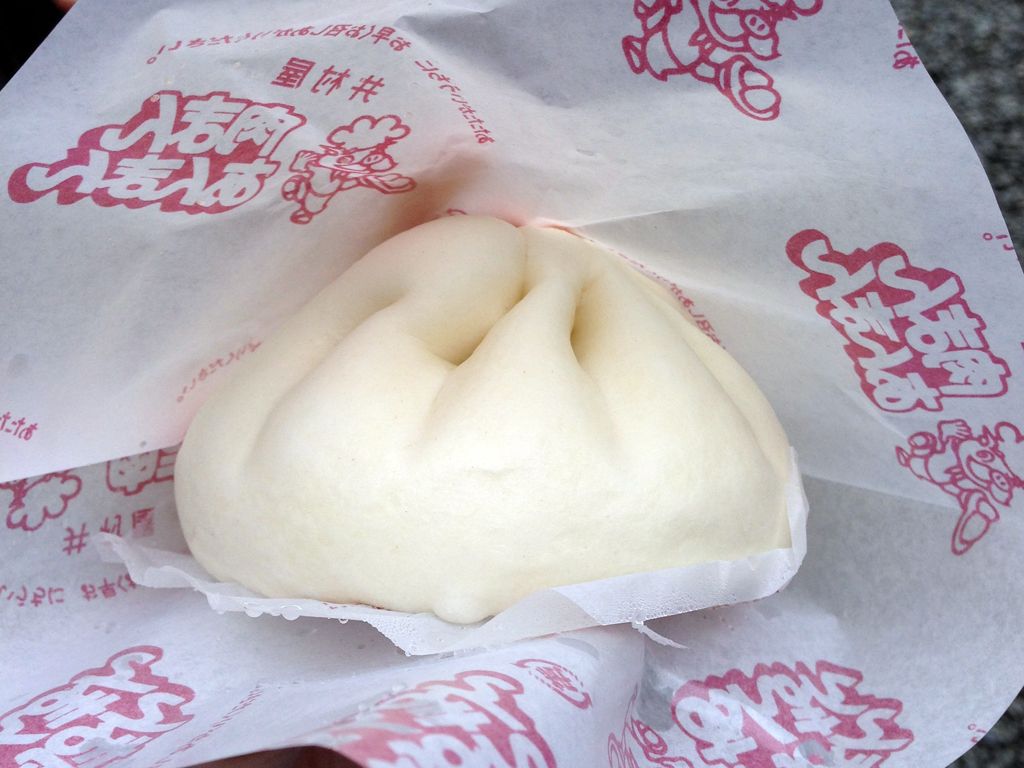
If the gold pavilion didn’t take me by surprise, then the following place certainly did the job. We arrived at Ryoan-ji and since I’ve already been to numerous temples, I thought it would be like the other temples; lovely gardens, impressive shrines, tasty side vendors, etc. But this temple had something else.
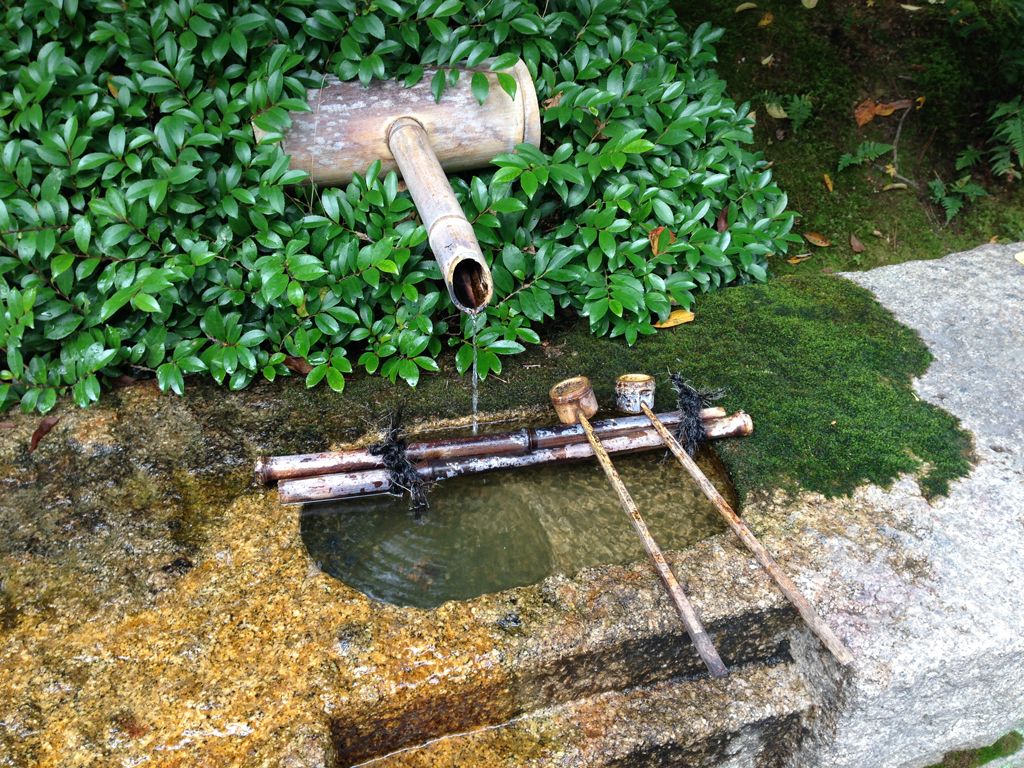
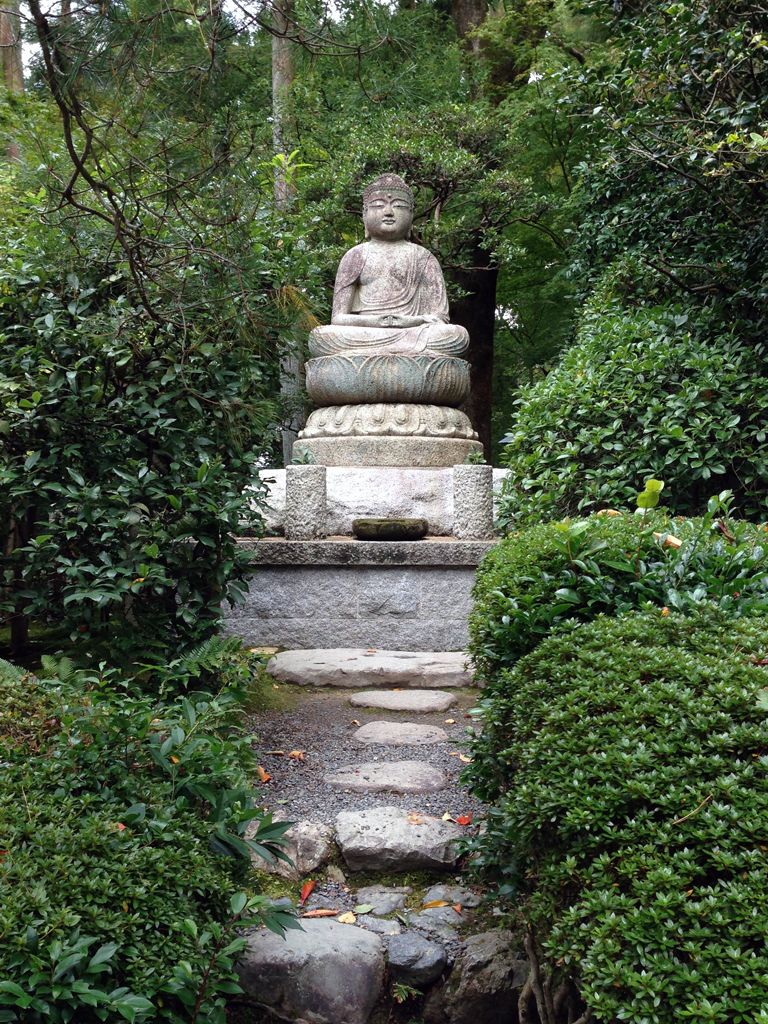
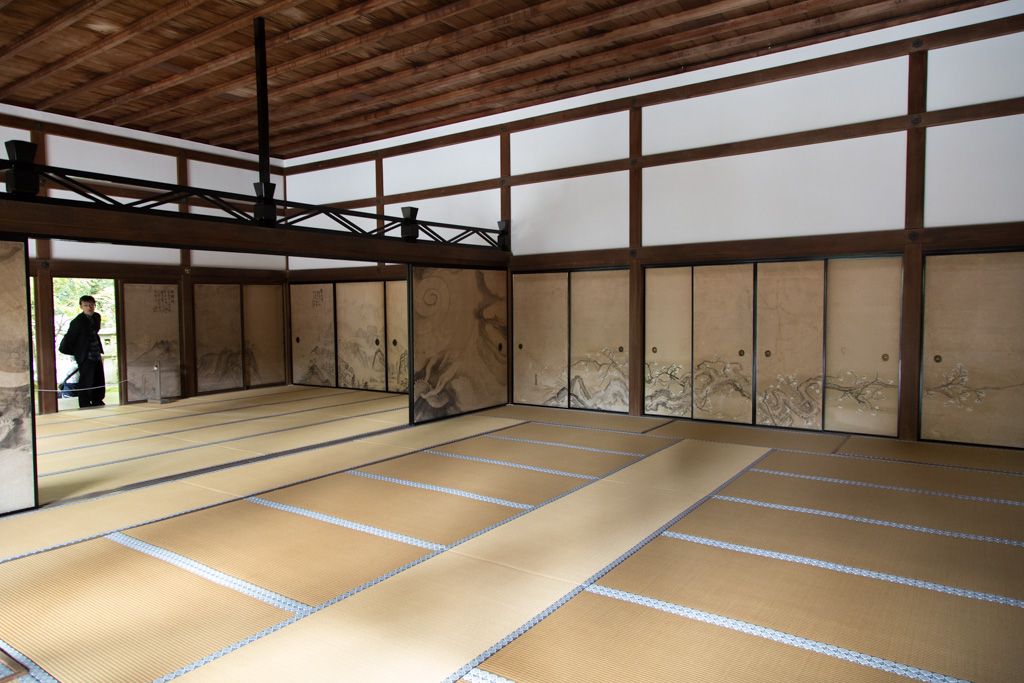
And there it was: the kare-sansui also known as the zen garden. I could not believe it was right there in front of me. I remembered studying this garden when I first moved here in the US in third grade and my class was representing Japan. When I first saw a picture of it as a kid, I thought there weren’t enough plants. As I progressed in school I heard so many theories about this garden, both scientific and philosophical. But I never thought I would see this garden in person.
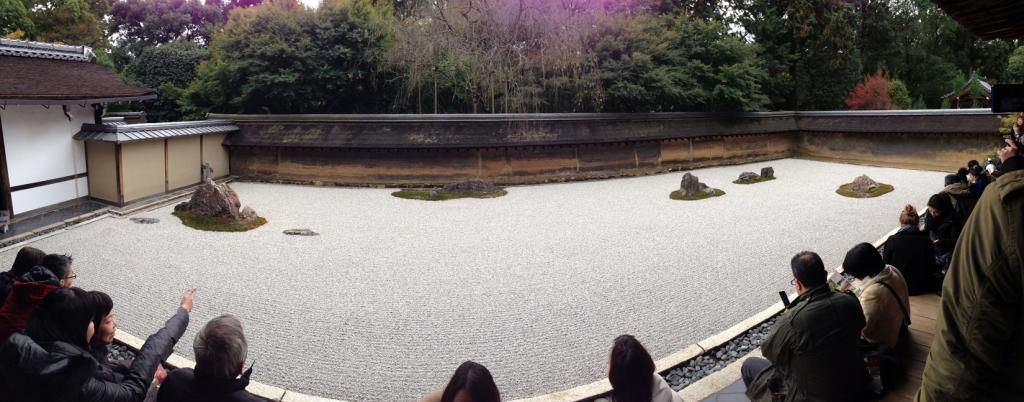
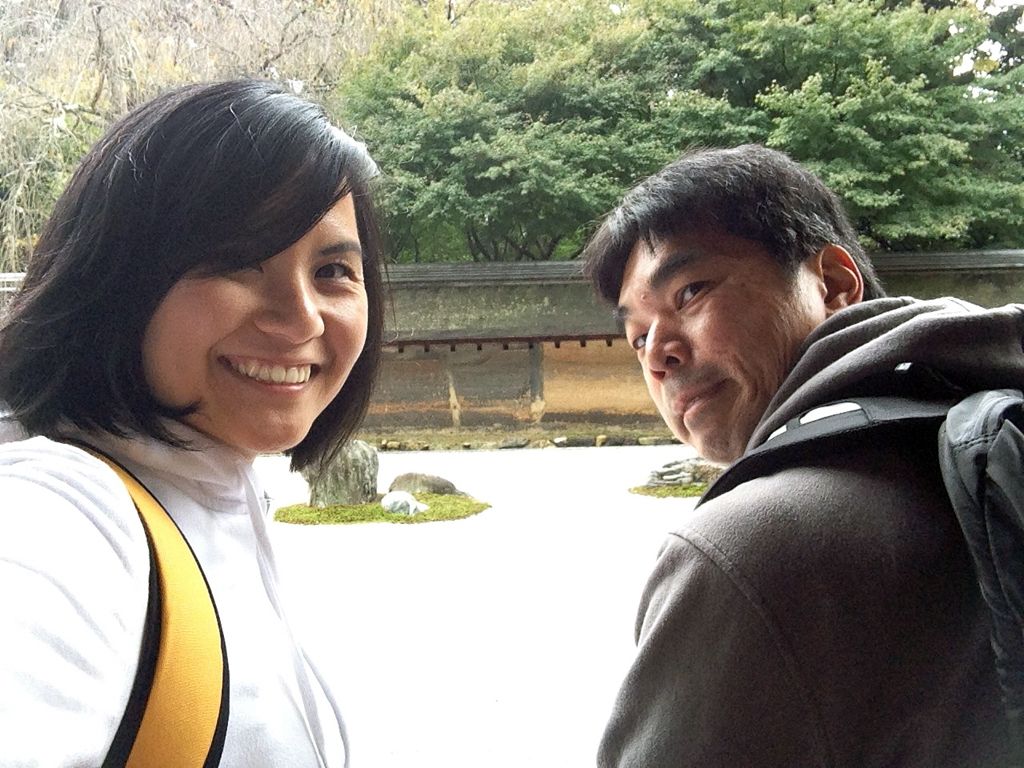
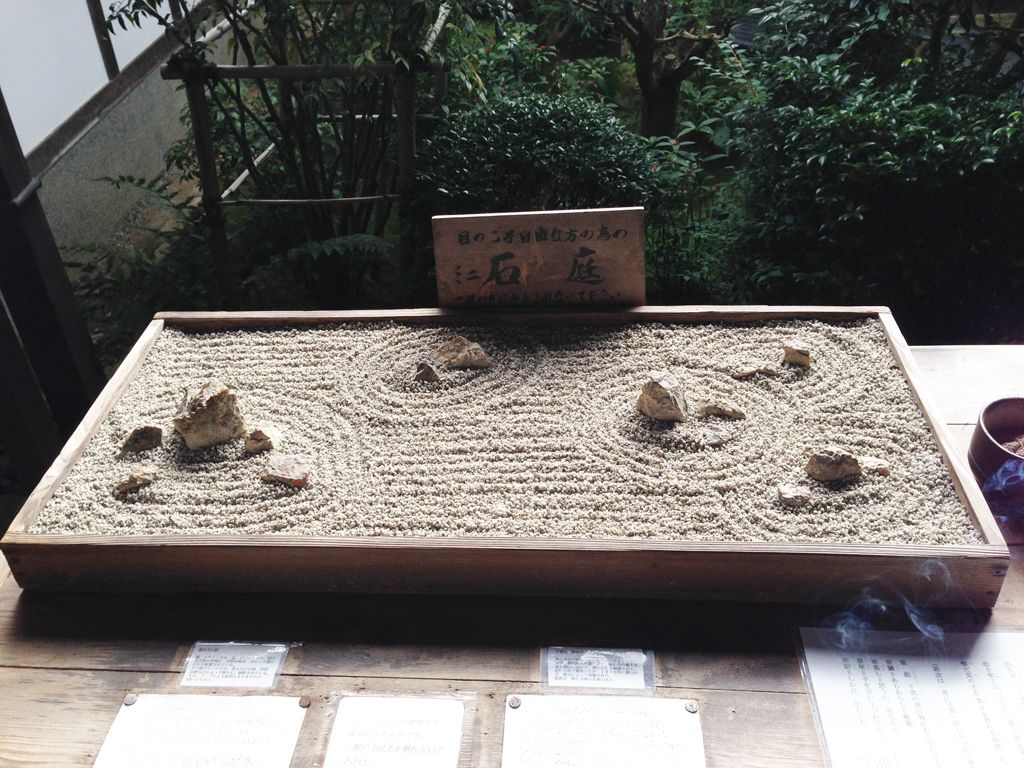
After seeing the Ryoan-ji, we headed off to the Ninna-ji temple which is considered to be part of the Historic Monuments of Ancient Kyoto, a UNESCO World Heritage Site. Tourists are only allowed to walk on certain pathways. They can neither walk outside or inside the building. We first started out at the south of the temple, made our way north, and exited back to the south again.
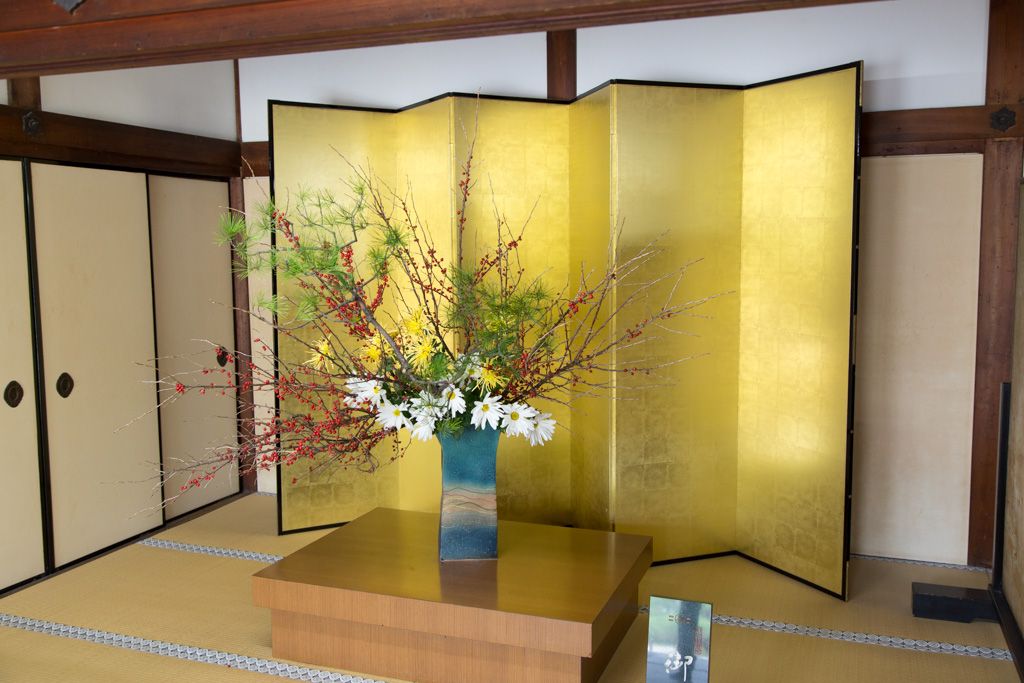
*Pretty flower arrangement.
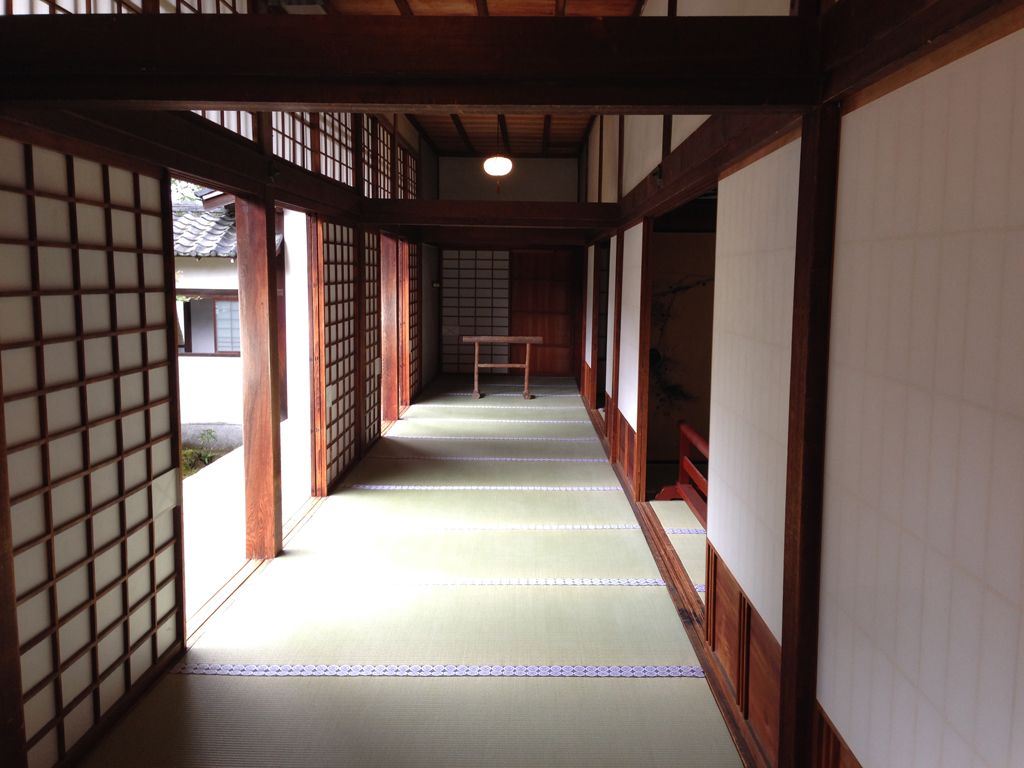
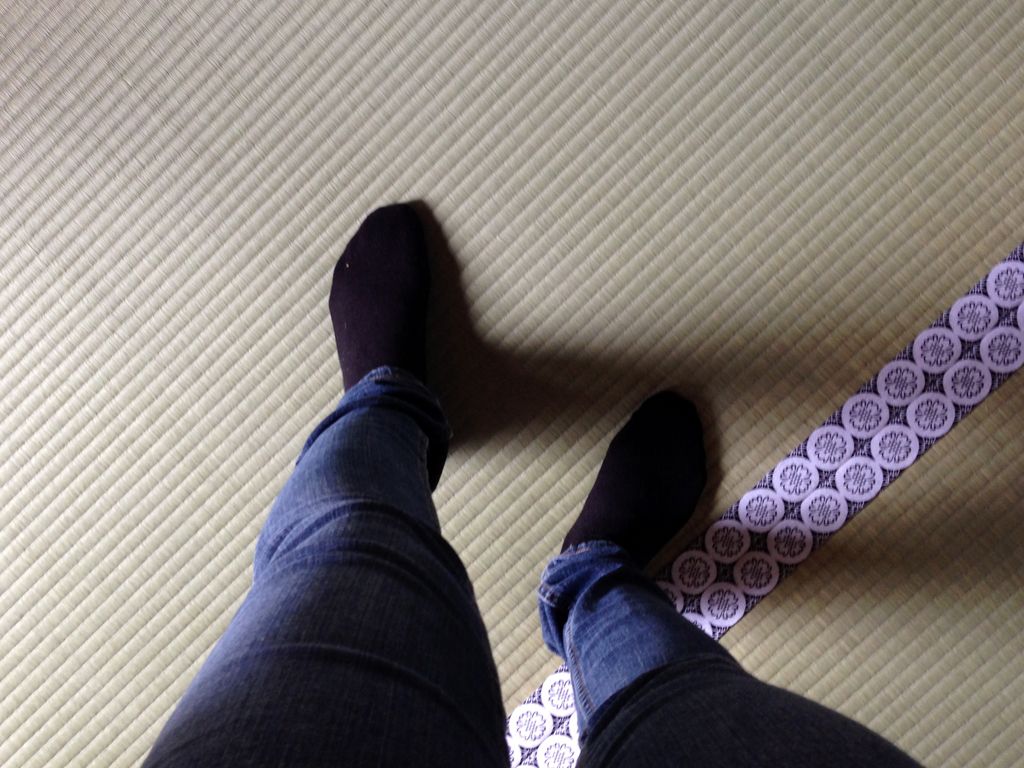
*Like most temples we’ve been to, no shoes allowed.
The Shinden’s South Garden mainly consisted of sand patterns and open space. It certainly has a contemporary feel to it.
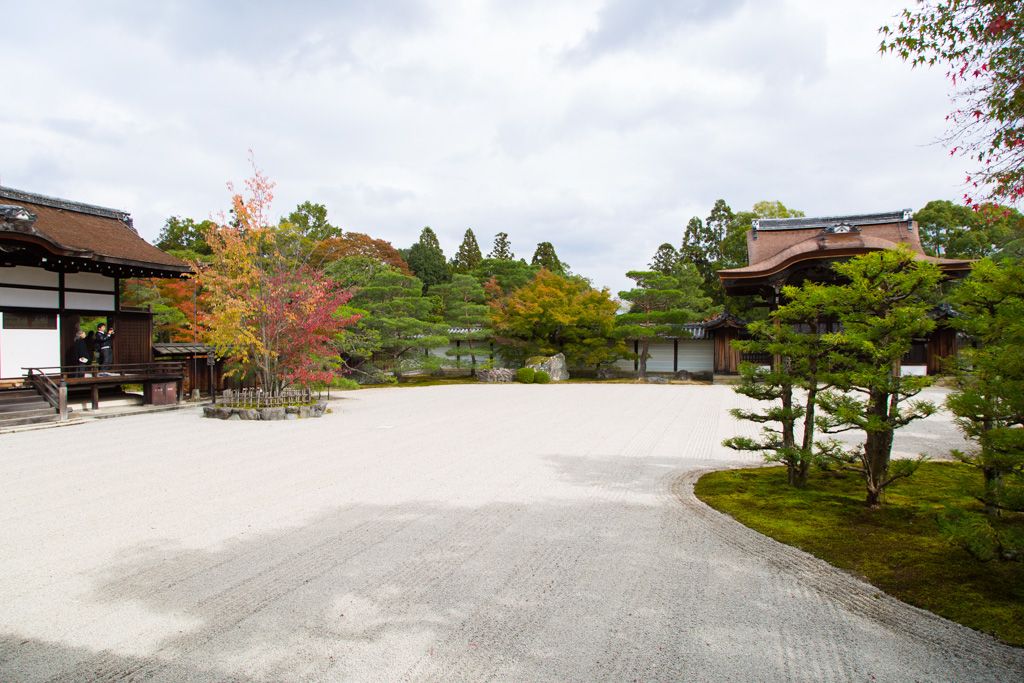
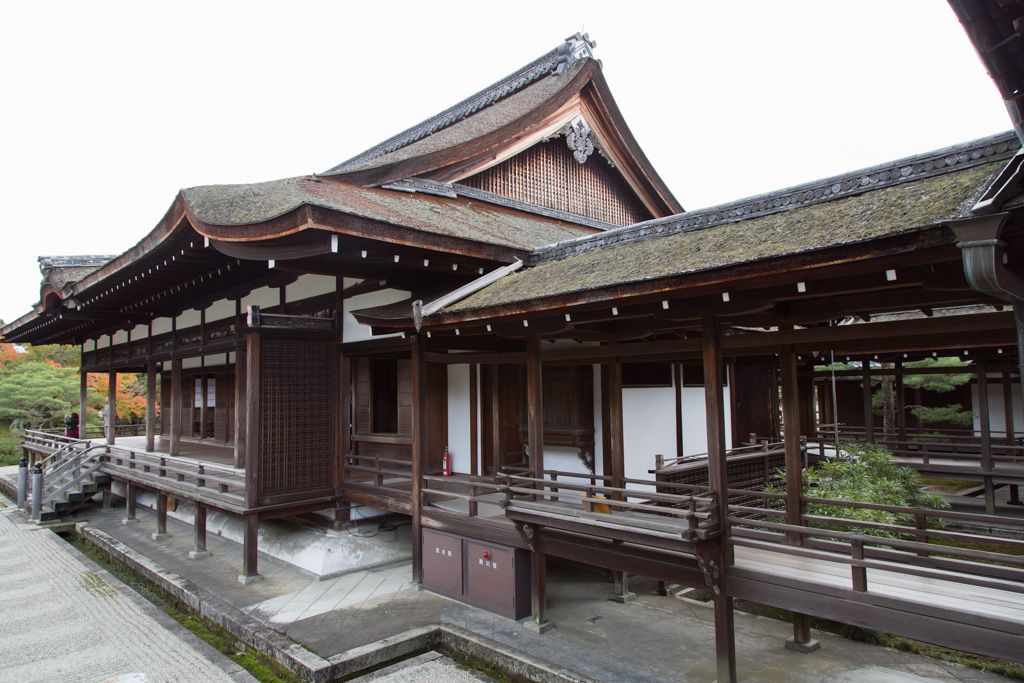
*Shinden
The Shinden’s North Garden on the other hand, has a lovely pond and full of trees. It’s pretty much my preference.
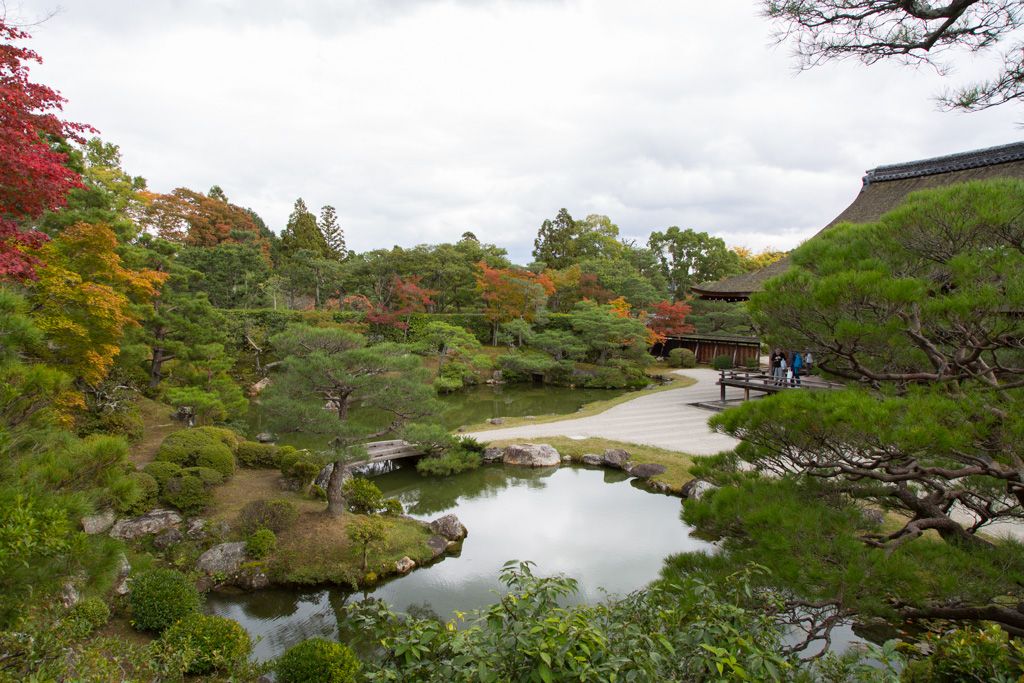
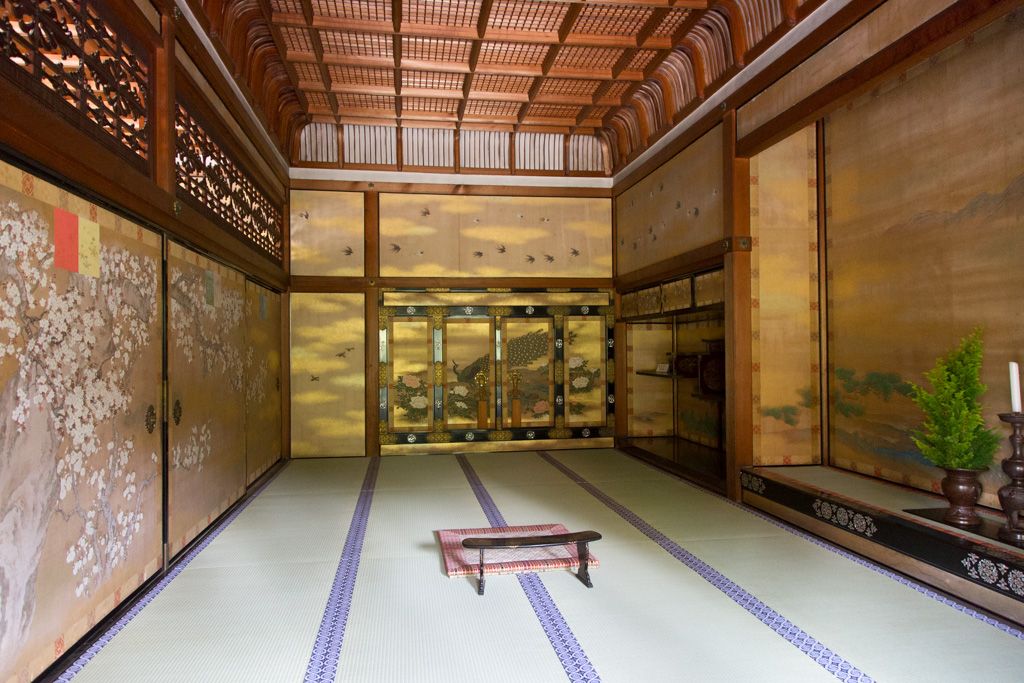
*Interior Shinden
Just outside the temple I could actually see the Pagoda from the Shinden’s North Garden. It looked short from where we stood but it was a lot taller when we were in front of it.
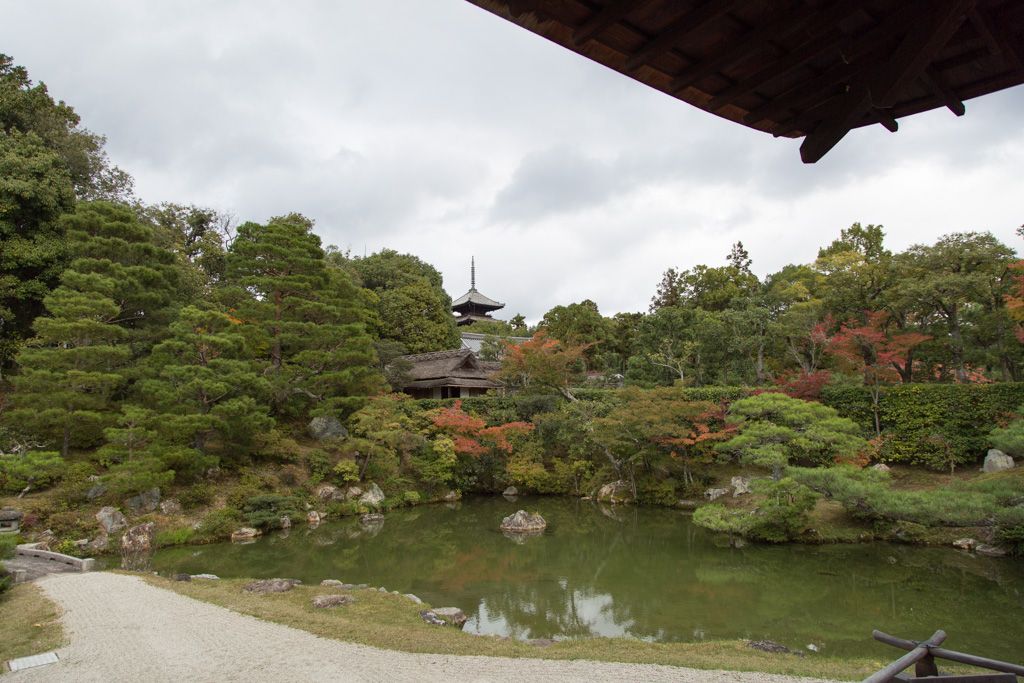
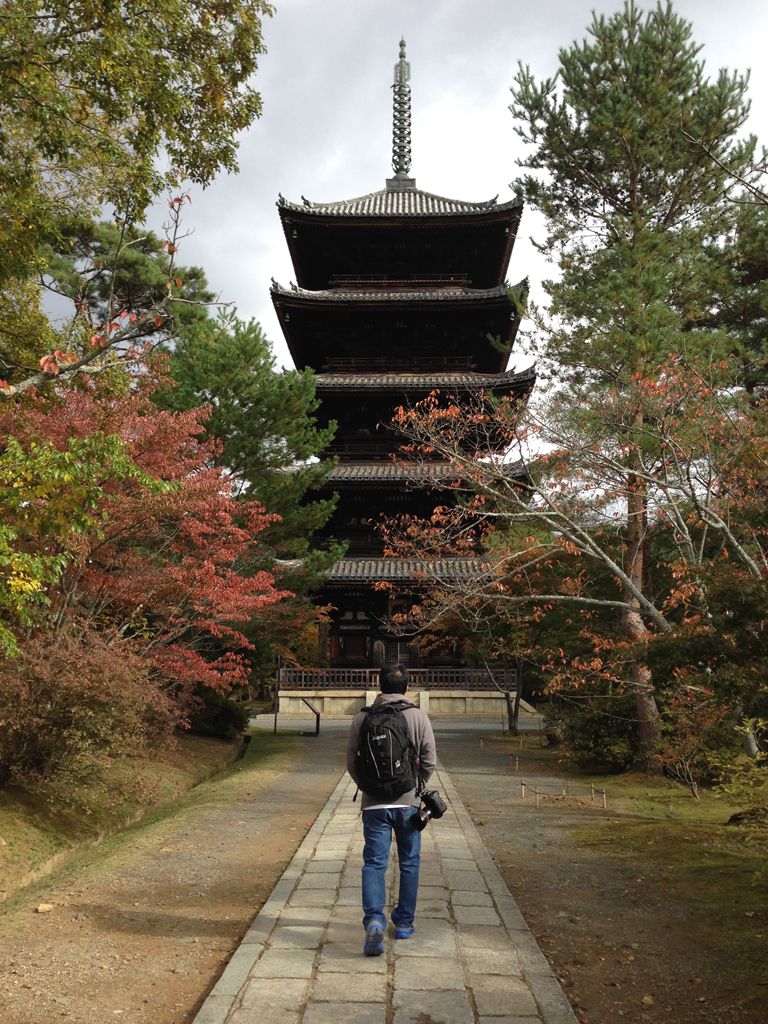
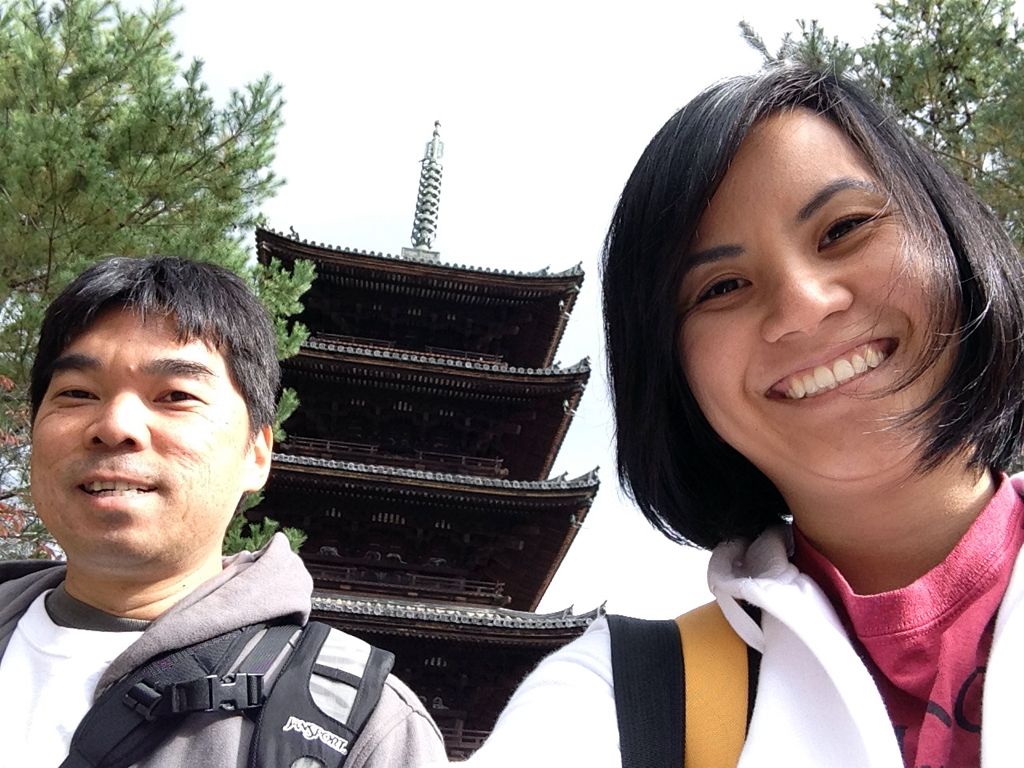
The next destination was located on the western outskirts of Kyoto: Arashiyama. We decided to take a short train ride since it was a too far to walk and a bit too expensive to take a taxi.
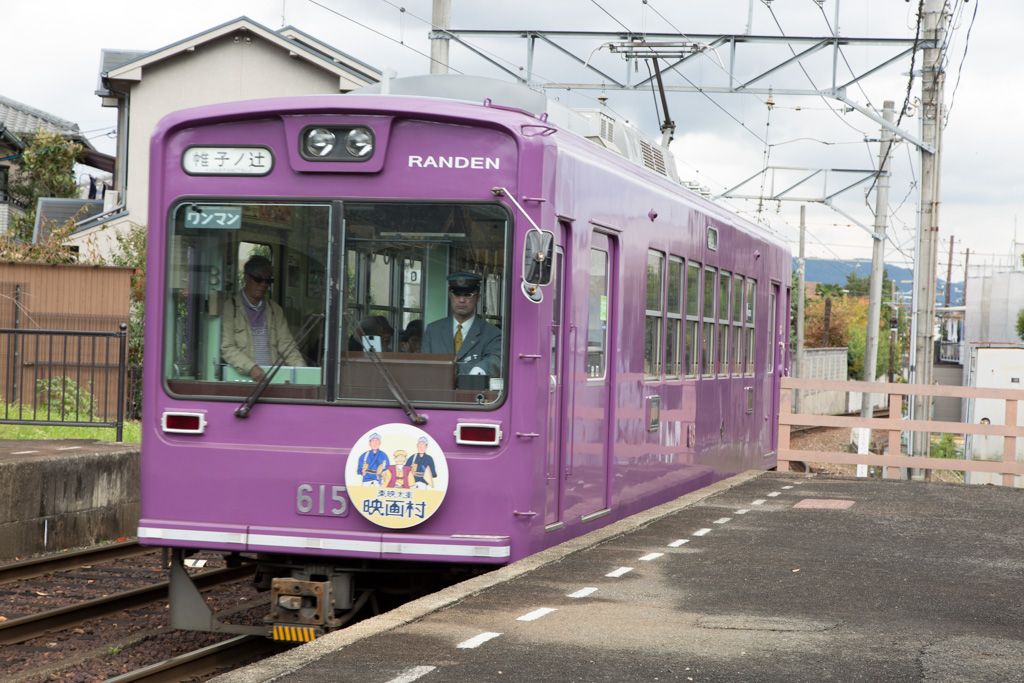
The rain was pouring hard by the time we got there. It made me a little hungry because of it and it didn’t help how there was a market full of snack vendors at the train stop. We waited for a bit without buying any snacks this time since the vendors had long lines. Once the rain lightened up, we walked through the market to get to Togetsukyo. Unfortunately, the rain came back by the time we got there so we weren’t able to cross the bridge.
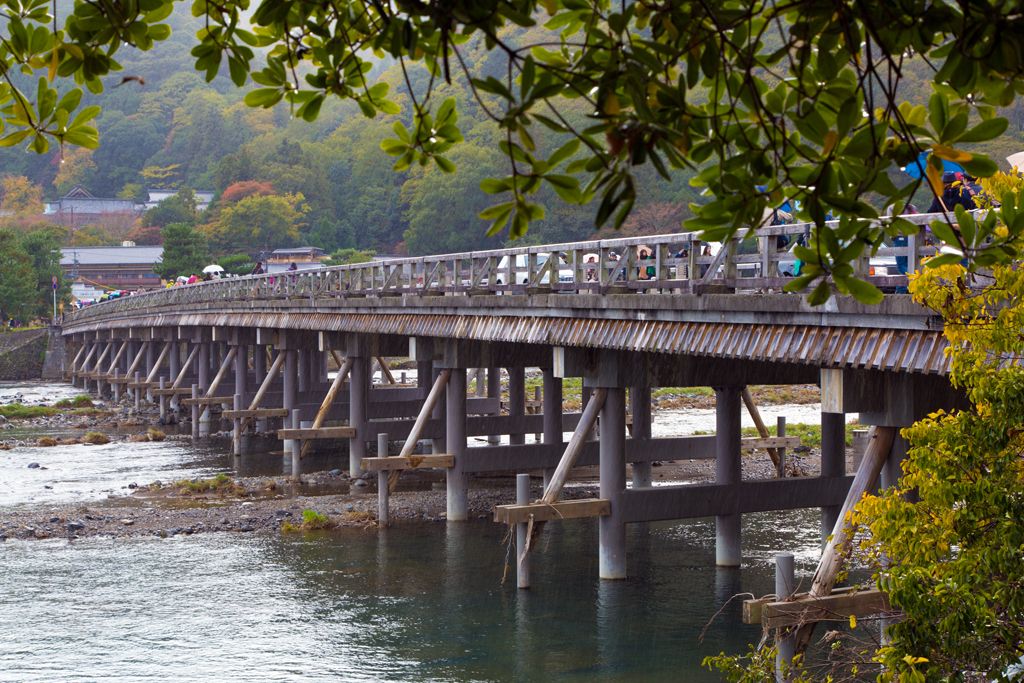
It was a little passed lunchtime and since it was raining, we might as well have lunch. We found a cute restaurant at the corner of the street called Café de Salan right next to the Togetsukyo bridge. The restaurant was actually more of a dessert café but they still serve a decent dish. Despite how Hiroshi and I love meat, all of their dishes were vegetarian since Kyoto is well known for their vegetables. I didn’t complain because it was something new. I ordered Kyo Yasai Tappuri Tonyu Dashi no Ontama Gohan set while Hiroshi ordered a curry version. This was probably the most healthiest dish I’ve ever eaten out of this trip. If I ever plan on going vegan, this would be my ticket.
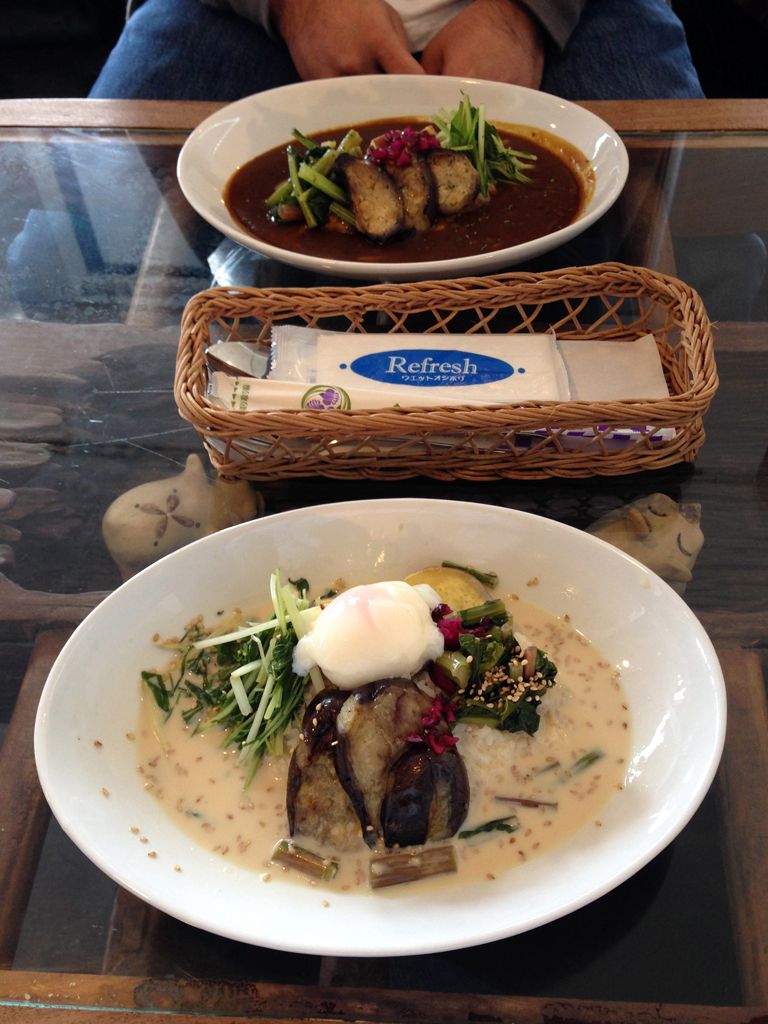
Our lunch came with a complimentary dessert. Yay!
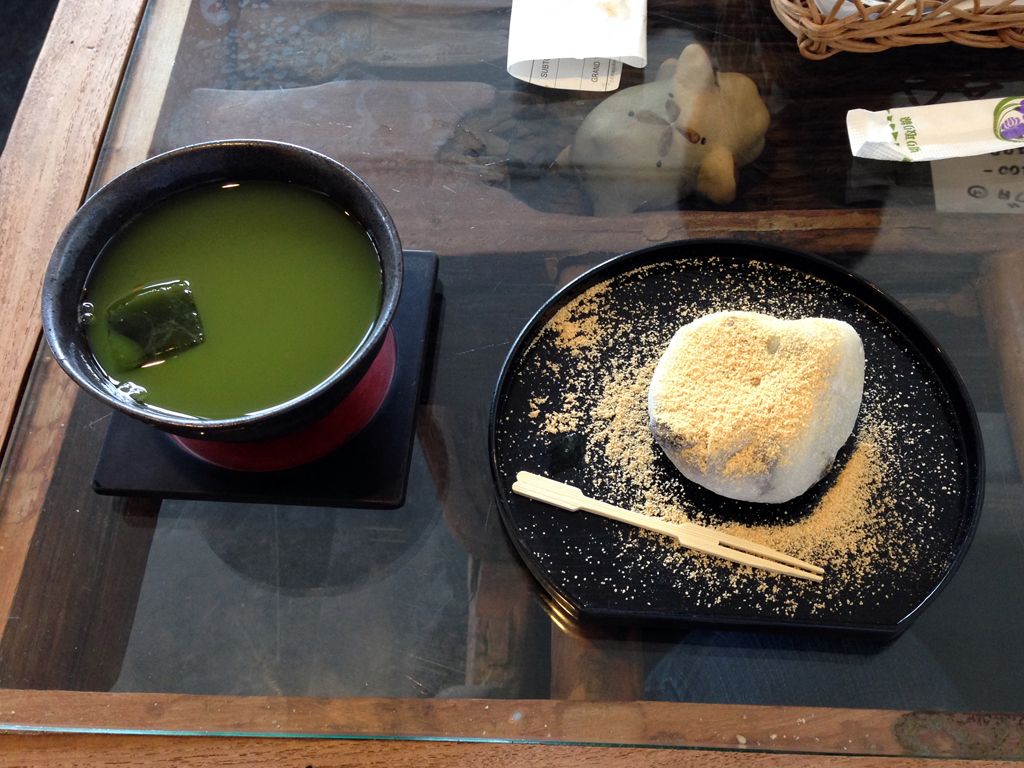
It stopped raining while we ate but then came back just when we finished. Go figure. Our last stop in Kyoto was the Sagano bamboo forest, another place Hiroshi’s never been to. He was a bit disappointed that he couldn’t take a better picture because of the weather. I still thought they were pretty. I don’t think I’ve ever seen so many bamboos in my entire life. The forest seems mystical, with all the tall bamboos reaching out while its leaves covered the sky.
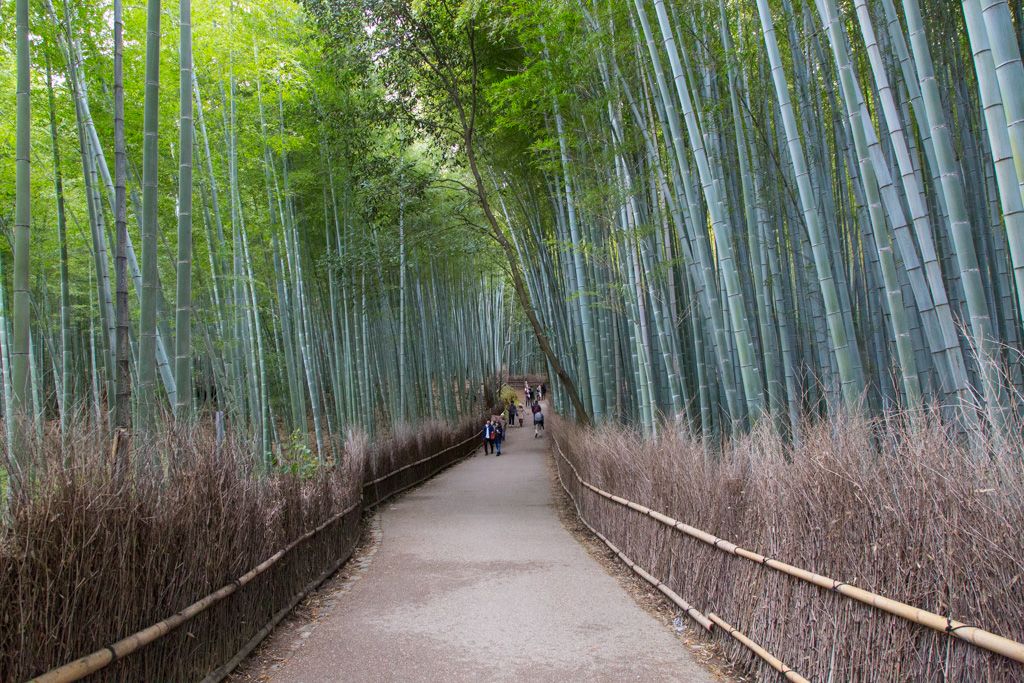
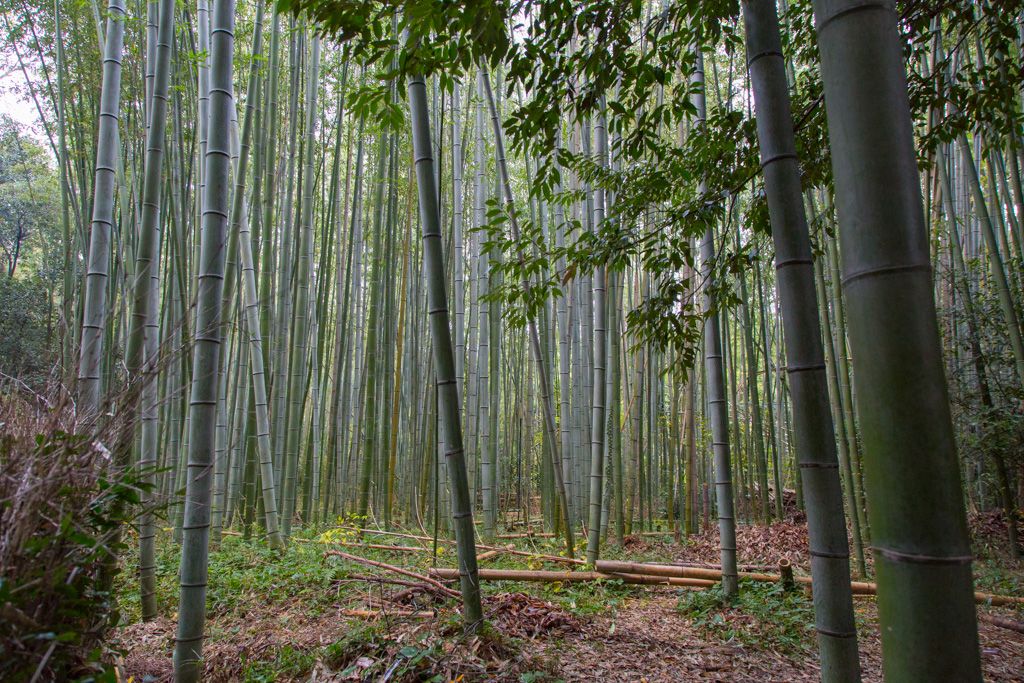
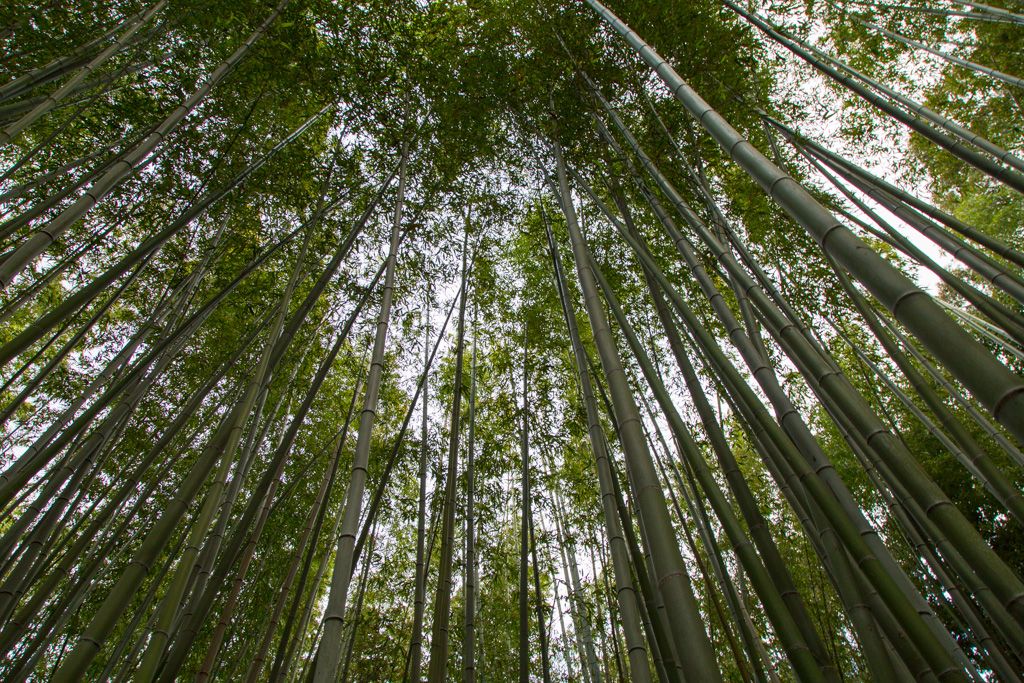
Even though the day hasn’t ended (we usually call it a day when it gets dark), it was time to leave Kyoto and head to Hiroshima. I felt a bit sad to leave Kyoto yet at the same time looked forward to a new city.
Since we won’t be going anywhere else other than checking in the hotel in Hiroshima, Hiroshi bought bentos for dinner while I treated ourselves tasty Belgian Manneken Waffle for a snack. I was curious to try the waffle because of the long line and we still had time. I bought caramel milk flavor for myself and a chocolate for Hiroshi. They were pretty tasty!
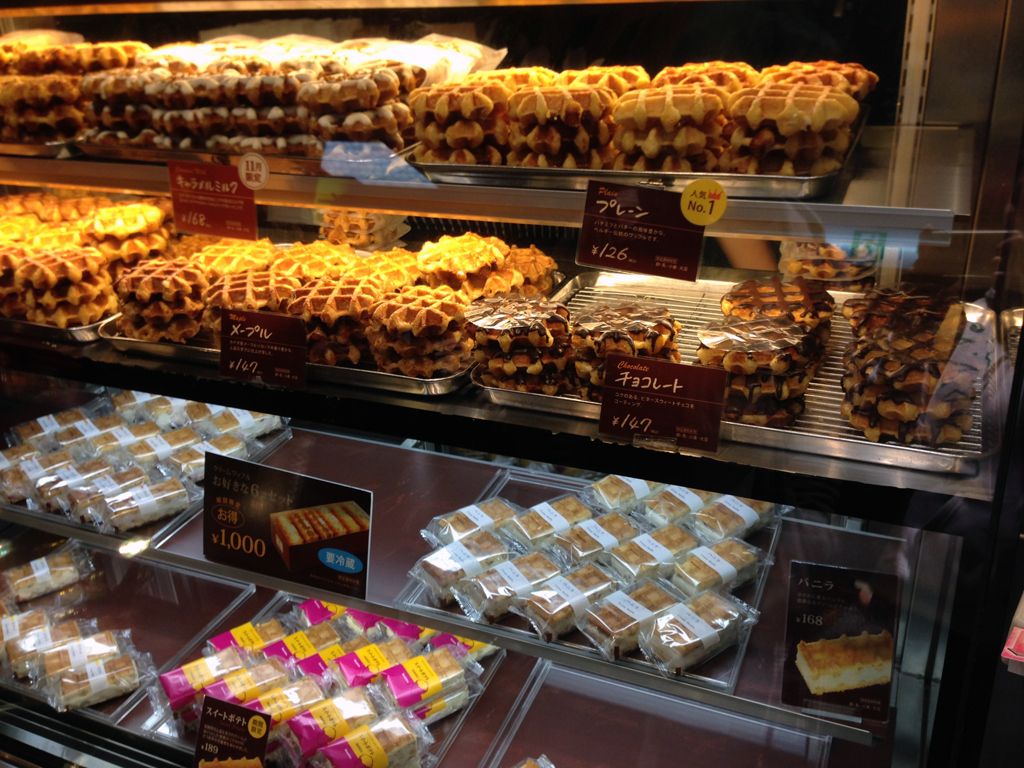
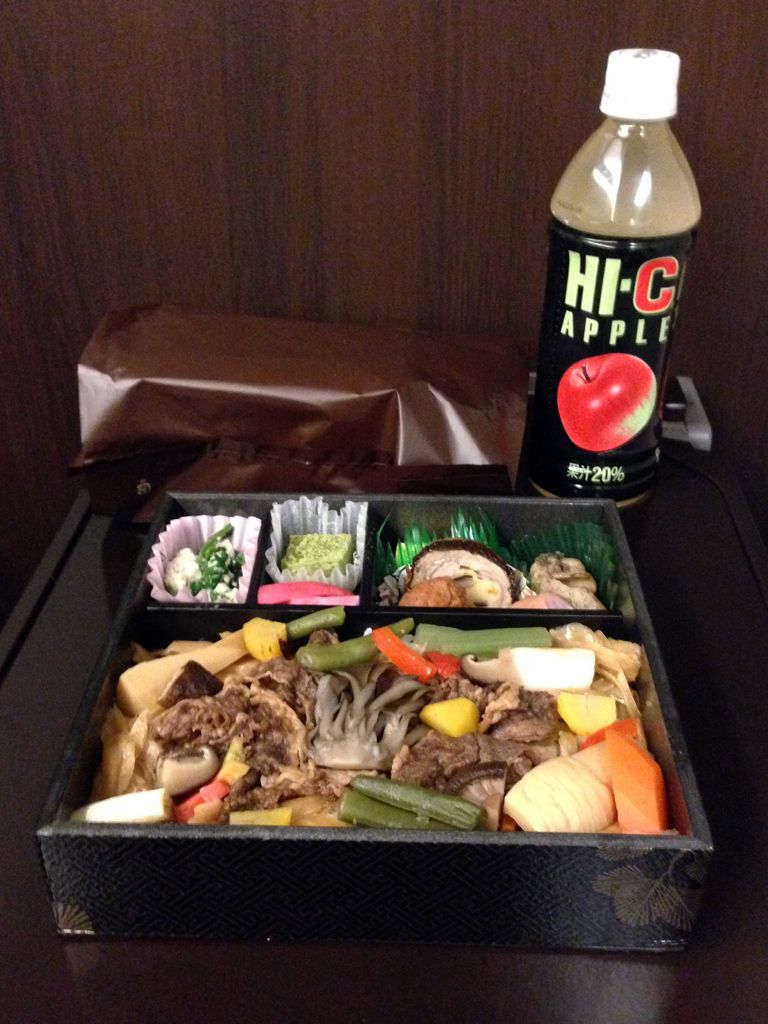
Night came and we arrived at the hotel that was literally next to the train station. We did our good old ritual right when we got into our room: hot bath, watch TV, and look out at night. I was able to do a bit of grooming since I wasn’t as tired as I usually was. At this point I think was finally getting over my jet lag.
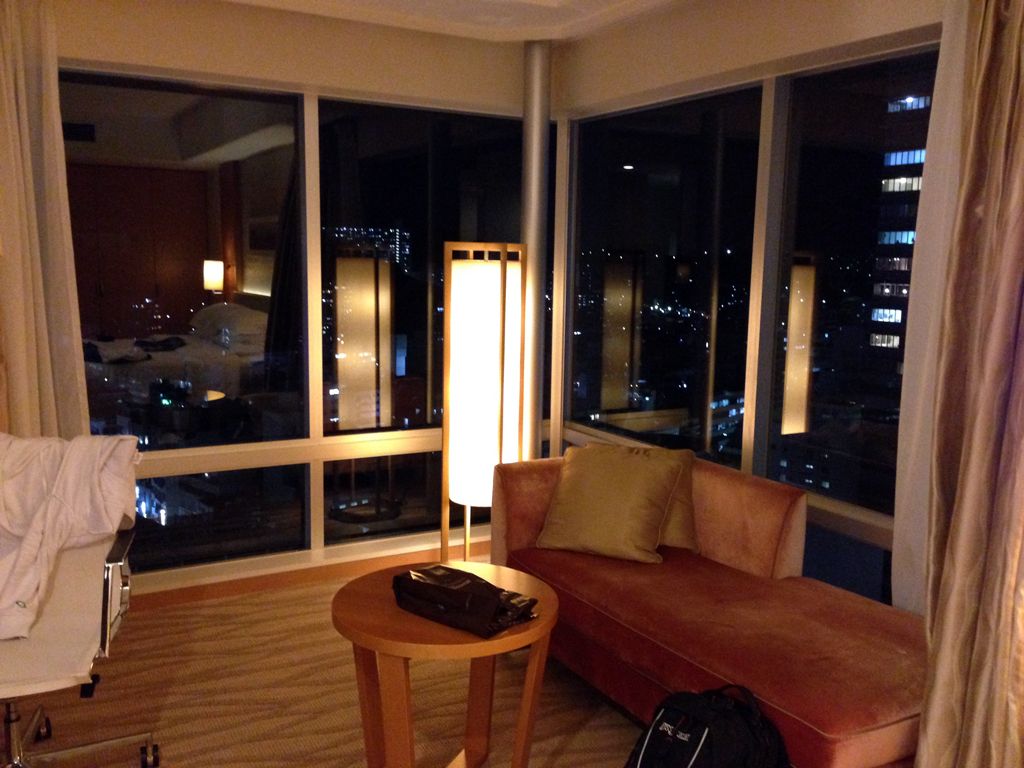
There were so many things we did in Kyoto that it took me a while to absorb it all in. Honestly, I felt like I was in Japan for a month now and we’ve only been in Japan for four days. I never knew I could see so many things in just two days in Kyoto. Then again, Hiroshi is great when it comes to planning a packed schedule without feeling like things were rushed. And if things didn’t work out, he always finds another way. Best travel companion ever!
End of Day 4
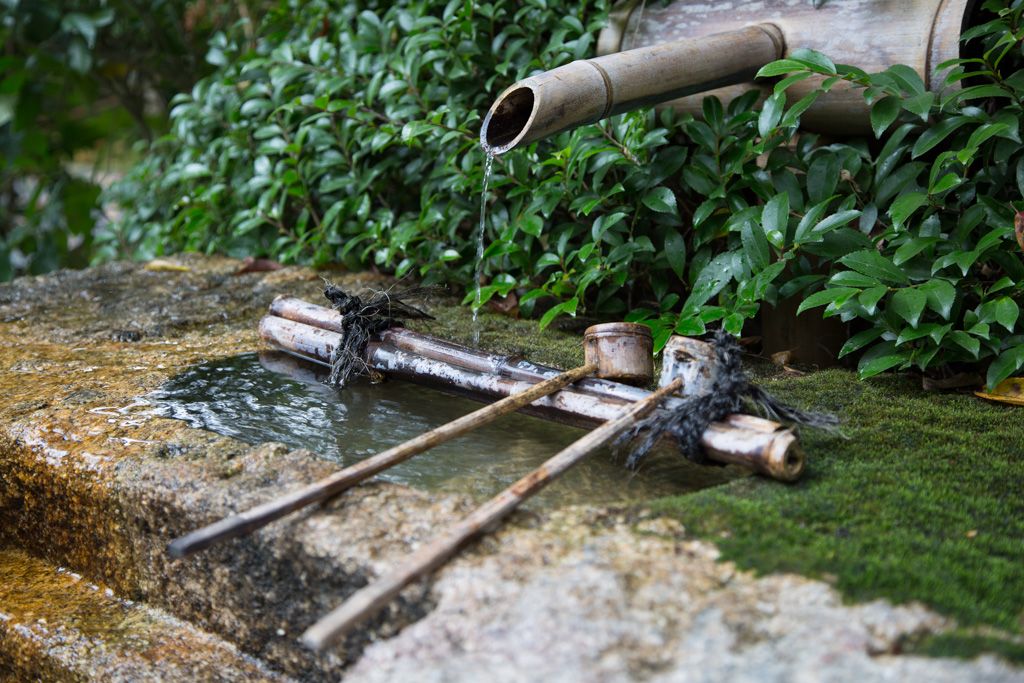
It was another cloudy morning but thanks to a delicious dinner, lots of snacks, a long hot bath, and a really good sleep (didn’t have to wake up early), we were very well recovered from the busy Day 3. Seriously, I slept like the dead. This was our last day in Kyoto meaning we had to take everything with us and check out of the hotel.

*Bye-bye Kyoto hotel!
By now we’ve pretty much gotten used to walking around with a crummy weather. Our first stop was Nijo-jo, my very first castle in Japan. It was kind of weird how the castle was in the middle of the city. One minute you’re in modern civilization, the next you’re back in 1600.
There are two parts of the castle: Ninomaru palace and the Honmaru palace. The Ninomaru palace, located at the front entrance, is much bigger than the Honmaru palace. It’s also more decorated and has a pretty pond on its garden.




Even though we didn’t have a tour guide, I did learn a lot from the structure. The wooden floors close to the most important areas creaks to let the person inside know someone is approaching. It’s not a loud and annoying noise but a rather faint sound. I thought that was pretty clever how they built it.

The Honmaru palace, on the otherhand, is smaller and surrounded by a moat. It’s mostly open space and didn’t have much of a garden but between the two palaces, this would have to be the safest. Ninomaru palace seems to be built more for entertaining guests while this one seems to be more of a private pad.



One of the interesting things I found in this castle was the Phoenix Trees (Chinese Parasol Trees) that were exposed to the atomic bomb.
Below is a direct English copy from the sign on the picture:
“This tree is offspring of one of the Aogiri trees in Hiroshima Peace Memorial Park which were exposed to the atomic bomb in Hiroshima in 1945. These Aogiri trees survived in spite of being 1.3 kilometers away from the center of the explosion and sustaining the full force of the heat rays and blast of the atomic bomb. Offspring of these trees have been planted in many places and represent the importance of peace and life for the next generation. In October, 2013 (Year 25 of the Heisei Era), students in Kyoto Municipal Horikawa Senior High School and Fukushima Prefectural Aizu Senior High School cooperated to plant this tree in accordance with the project of Yuyusha-Kyo-Suzume and the Kansai branch of the Foster Phoenix Aogiri Foster Movement.”

Our next destination was another temple called Kinkaki-ji. Oh my god… this was the most beautiful garden I’ve ever seen. The garden structure is an example of Muromachi period garden design, considered to be a classical age of Japanese garden design. The top two floors of the pavilion are covered in pure gold leafs and serves as “shariden,” housing relics of the Buddha. It was so beautiful that it literally took my breath away.


At the exit, Hiroshi went on a restroom break and I couldn’t help but buy myself a warm treat on a vendor close by. By the time he came out, a nice warm pork bun was waiting for him.

If the gold pavilion didn’t take me by surprise, then the following place certainly did the job. We arrived at Ryoan-ji and since I’ve already been to numerous temples, I thought it would be like the other temples; lovely gardens, impressive shrines, tasty side vendors, etc. But this temple had something else.



And there it was: the kare-sansui also known as the zen garden. I could not believe it was right there in front of me. I remembered studying this garden when I first moved here in the US in third grade and my class was representing Japan. When I first saw a picture of it as a kid, I thought there weren’t enough plants. As I progressed in school I heard so many theories about this garden, both scientific and philosophical. But I never thought I would see this garden in person.



After seeing the Ryoan-ji, we headed off to the Ninna-ji temple which is considered to be part of the Historic Monuments of Ancient Kyoto, a UNESCO World Heritage Site. Tourists are only allowed to walk on certain pathways. They can neither walk outside or inside the building. We first started out at the south of the temple, made our way north, and exited back to the south again.

*Pretty flower arrangement.


*Like most temples we’ve been to, no shoes allowed.
The Shinden’s South Garden mainly consisted of sand patterns and open space. It certainly has a contemporary feel to it.


*Shinden
The Shinden’s North Garden on the other hand, has a lovely pond and full of trees. It’s pretty much my preference.


*Interior Shinden
Just outside the temple I could actually see the Pagoda from the Shinden’s North Garden. It looked short from where we stood but it was a lot taller when we were in front of it.



The next destination was located on the western outskirts of Kyoto: Arashiyama. We decided to take a short train ride since it was a too far to walk and a bit too expensive to take a taxi.

The rain was pouring hard by the time we got there. It made me a little hungry because of it and it didn’t help how there was a market full of snack vendors at the train stop. We waited for a bit without buying any snacks this time since the vendors had long lines. Once the rain lightened up, we walked through the market to get to Togetsukyo. Unfortunately, the rain came back by the time we got there so we weren’t able to cross the bridge.

It was a little passed lunchtime and since it was raining, we might as well have lunch. We found a cute restaurant at the corner of the street called Café de Salan right next to the Togetsukyo bridge. The restaurant was actually more of a dessert café but they still serve a decent dish. Despite how Hiroshi and I love meat, all of their dishes were vegetarian since Kyoto is well known for their vegetables. I didn’t complain because it was something new. I ordered Kyo Yasai Tappuri Tonyu Dashi no Ontama Gohan set while Hiroshi ordered a curry version. This was probably the most healthiest dish I’ve ever eaten out of this trip. If I ever plan on going vegan, this would be my ticket.

Our lunch came with a complimentary dessert. Yay!

It stopped raining while we ate but then came back just when we finished. Go figure. Our last stop in Kyoto was the Sagano bamboo forest, another place Hiroshi’s never been to. He was a bit disappointed that he couldn’t take a better picture because of the weather. I still thought they were pretty. I don’t think I’ve ever seen so many bamboos in my entire life. The forest seems mystical, with all the tall bamboos reaching out while its leaves covered the sky.



Even though the day hasn’t ended (we usually call it a day when it gets dark), it was time to leave Kyoto and head to Hiroshima. I felt a bit sad to leave Kyoto yet at the same time looked forward to a new city.
Since we won’t be going anywhere else other than checking in the hotel in Hiroshima, Hiroshi bought bentos for dinner while I treated ourselves tasty Belgian Manneken Waffle for a snack. I was curious to try the waffle because of the long line and we still had time. I bought caramel milk flavor for myself and a chocolate for Hiroshi. They were pretty tasty!


Night came and we arrived at the hotel that was literally next to the train station. We did our good old ritual right when we got into our room: hot bath, watch TV, and look out at night. I was able to do a bit of grooming since I wasn’t as tired as I usually was. At this point I think was finally getting over my jet lag.

There were so many things we did in Kyoto that it took me a while to absorb it all in. Honestly, I felt like I was in Japan for a month now and we’ve only been in Japan for four days. I never knew I could see so many things in just two days in Kyoto. Then again, Hiroshi is great when it comes to planning a packed schedule without feeling like things were rushed. And if things didn’t work out, he always finds another way. Best travel companion ever!
End of Day 4
